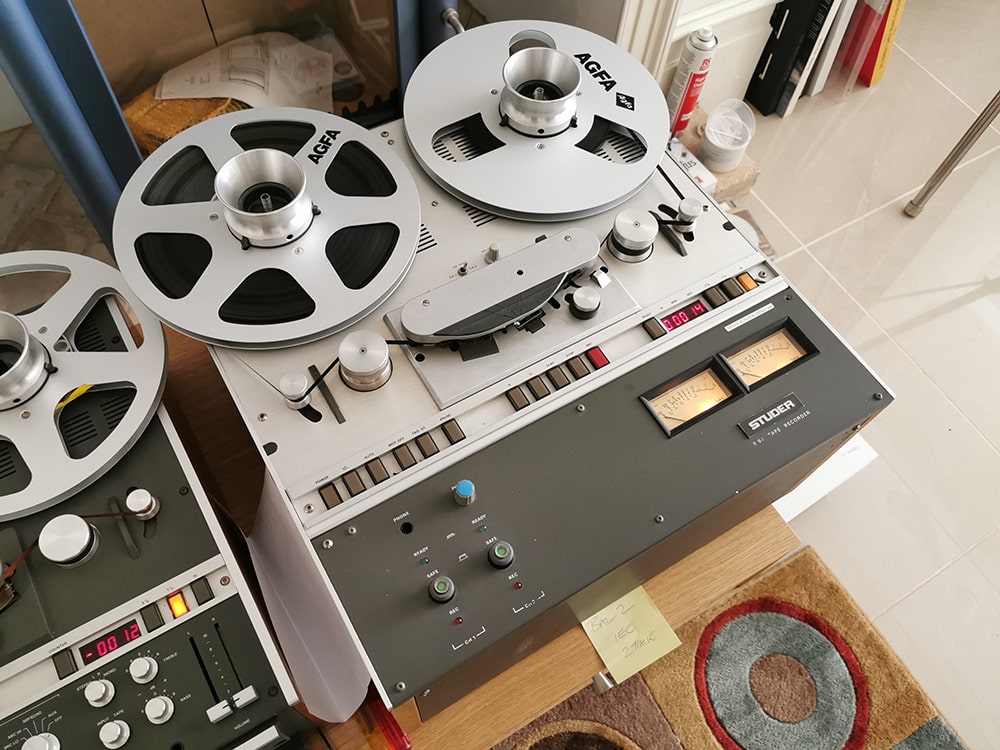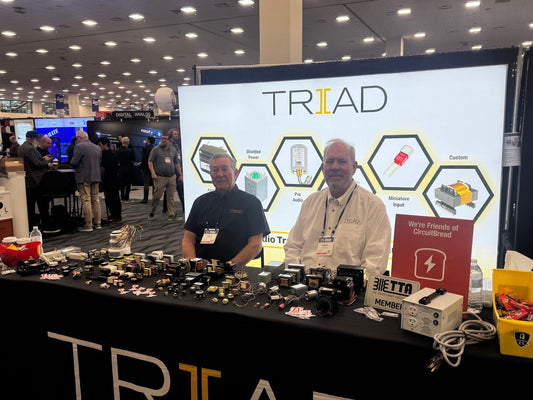With the myriad changes which have inevitably affected audio pursuits over the years – the return of vinyl, the decline in the numbers of print magazines and hi-fi shops – it’s worth reminding everyone of the value of the social element. I don’t mean hi-fi shows, which have miraculously survived not just the general decline in interest in audio but COVID-19 as well. Rather, I refer to a recent open-reel-tape-only experience which reminded me of a couple of the best evenings I ever enjoyed.
It’s over – what? 30-plus years? – since I was fortunate enough to attend a couple of meetings with the Westchester Audiophile Society. Hy Kachalsky (who sadly passed away on March 30, 1992), Arnie Balgalvis, and the rest of those industrial-strength high-end devotees welcomed me as a guest visitor. It was as flattering as could be for one who often suffers from Imposter Syndrome, especially when the typical guest would have been someone of the caliber of Dan D’Agostino or the late Jason Bloom, and I – a nebbish writer – had only been on the scene for under a decade.
What marked me forever was not the wealth of knowledge in the assembled throng in Hy’s listening room, nor the dazzling sound systems, but the camaraderie. It was a true mishpoche, some of the members playing the roles of whiny kvetching uncles, others arguing for the sake of it, most happy to groove to sound systems beyond their means without a salesperson breathing down their necks. Above it all was Hy, the most genial, warmest individual I have met in my 54 years as an audio casualty.
Now I am not about to suggest that hi-fi clubs have disappeared, as I still get the newsletter from the Boston Audio Society, and often see newsfeeds from groups in California and elsewhere. Rather, such organizations remind me of an often-overlooked element of our hobby, as we are too obsessed with minutiae, usually meaningless. When I think of the time spent debating oddities like magic stickers to put all over one’s hardware and walls, or green pens for CDs, or fetishizing over spikes, or other distractions, I now appreciate that the discussions weren’t time wasted.
Instead, it was and is our equivalent of “made guys breaking balls,” as beautifully realized in The Sopranos, or (politically unfashionable word trigger warning) ladies-who-lunch gossiping over the sushi. It added an element of involvement and social intercourse to what would otherwise be a solitary pursuit: sitting alone in the hot seat in one’s listening room. Hy mastered the art of sharing his system, of spreading the word about high-end audio at a grass roots level, which in turn provided a service for every guest manufacturer, giving them access to potential customers away from the pressure of a hi-fi store.
Although I am a member of another sort of community within audio, I have given up any travel until the aviation industry (and, in the UK, the perpetually-on-strike train drivers) gets its act together. As a usually gregarious sort, isolation has had its effect on my mental health, so the return of the UK’s AudioJumble was the first opportunity since COVID arrived for me to reconnect en masse with the hi-fi community.
My weekly fix, however, and on a much lower level, is regular meetings at a local coffee shop with friends I’ve known for decades, a gathering which one of the wives dubbed “The Sad Café.” We are united by our shared loves of cars (two are Lancia-only obsessives), wristwatches, and hi-fi. None are employed in the hi-fi business, nor is another dear friend (not a Sad Café attendee) whom I’ll call “H,” and who can claim a good half-century’s worth of ownership of high-end systems.
He and one of the Sad Café habitués, whom I will dub “J” and who is an audiophile of nearly 60 years’ standing, joined me in August at another friend’s home. Let’s name him “P.” Anonymity rules here because I don’t know if it’s illegal to make safety copies of 67-year-old tapes so they won’t be lost to posterity. Neither do I know the legality of his having a collection of master tapes gifted to him by his colleagues in the studio sector. Suffice it to say, the three of us were eager to hear both P’s impressive system (again, anonymity rules here) fed by three vintage open-reel decks and the tapes in his extensive library.
What prompted the get-together, and I repeat it was informal but hopefully not a one-off, was me retrieving a box of tapes which P was assessing for me, along with safety copies of the super-rare 1950s tapes I wished to be able to play for visitors to my listening room. The originals are simply too fragile and too difficult to replace to play repeatedly. P’s arsenal included a Revox A700 and a Studer B67 for making the 15 ips 2-track copies of my 7.5 ips 2-track originals. For playback of commercial 1/4-track tapes, he also had to hand a Revox A77.
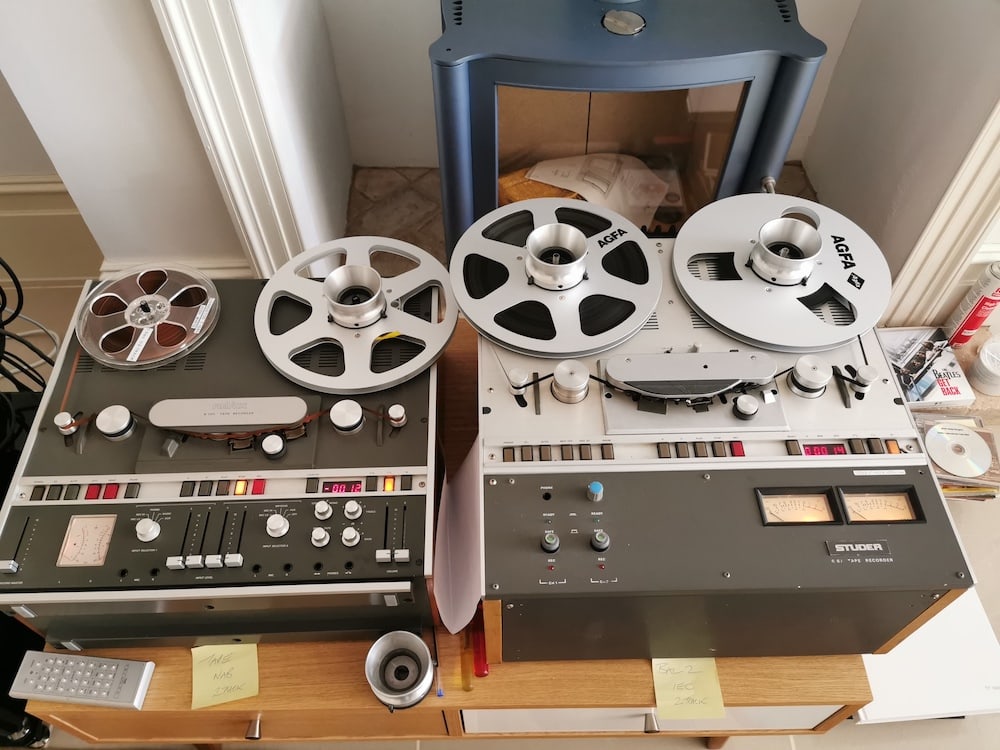
The Revox A700 and Studer B67 tape decks.
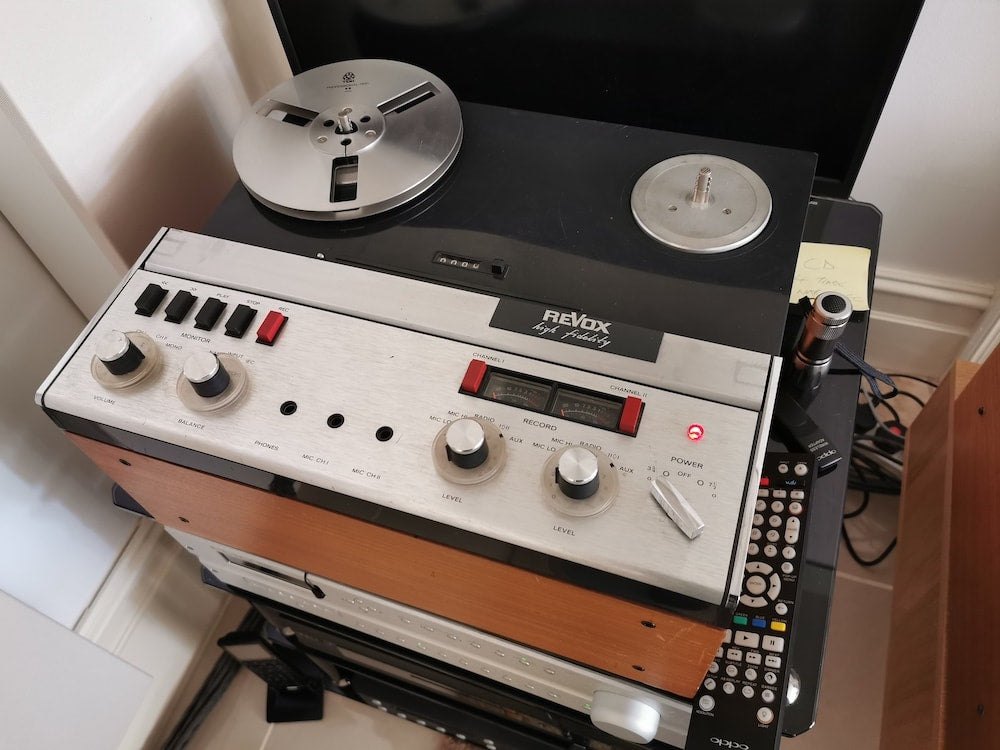
The Revox A77 tape deck.
As for the latter, and as one already convinced that commercial 1/4-track tapes are the second-finest-sound media ever offered to consumers after half-track tapes, he played us Procol Harum’s A Salty Dog. It had H nearly in tears, as the tape categorically massacred any vinyl or CD alternative. H’s opinion mattered as it was one of his all-time favorite albums, he had it on multiple formats, and his ears are hallmarked, 24-karat golden. He stated how the bottom end was so tactile, so deep and extended that he was now craving a copy of the tape in the way that I was affected by Tim de Paravicini playing for me the US Capitol Records release of the Beatles’ Sgt. Pepper’s Lonely Hearts Club Band.
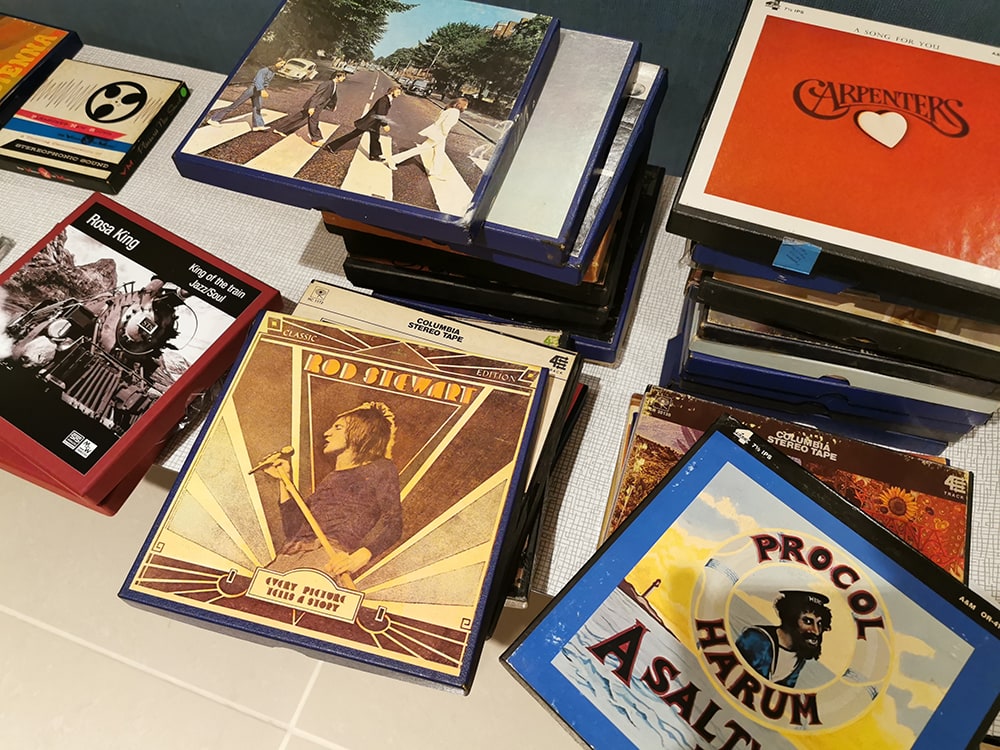
Eat your hearts out!
What shook my, J’s and H’s worlds, however, were P’s master tapes. It wasn’t my first time hearing first-generation or second-generation master tapes, or God-knows-what-generation production tapes, having been to Abbey Road a number of times back in the 1980s, as well as a number of press events in studios. More illuminating was having visited Bob Ludwig’s Gateway Mastering in my hometown of Portland, Maine a few times. Bursts of Bob’s system are life-changing. Period.
Of greater concern over the length of my career is knowing that audiophiles who haven’t been in a recording studio have no idea of what they are missing. That’s the hard fact, just as you have no idea what a professional racing driver goes through until you’ve managed a few laps on a racetrack, or to use another analogy, tasted pizza in Naples. But this session was something else, for a simple reason. Nearly every studio I have been in (but obviously not all) has an aggressive, almost sterile playback system, which is as it should be. The studio’s system is a tool for assessing a recording. P’s system was categorically of studio quality and origins, but his amplification, cabling, etc., were transparent rather than nakedly forensic.
Avoiding the studio-vs-audiophile debate, suffice it to say that to describe what we heard as “revelatory” is to use extreme understatement. The scale of the sound, the impact, the clarity, the presence – while it didn’t quite drive me to the point where I could no longer face my own system, which is pretty good by most standards, it did open my ears to the limits of domestic sound systems. And that is something which every designer, manufacturer, retailer, and reviewer should be reminded of constantly.
But forget all that. Two hours-plus of intense listening, in a way not available at any hi-fi show nor in any shop – both for undeniable, practical reasons – reinforced my conviction that hi-fi is about more than reproducing music in the home to a high standard. If a social element is not just acceptable but encouraged in most other fields as a means of support and, yes, of proselytizing, maybe it’s one way we can save high-end audio’s appeal from diminishing even further.
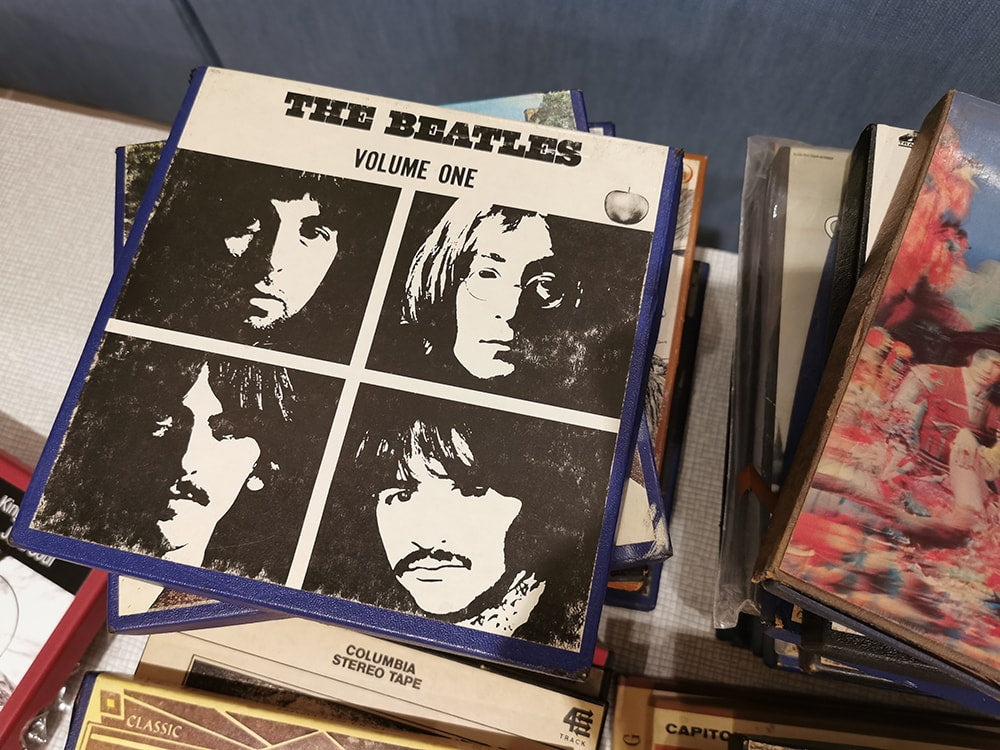
One of the two tapes comprising The Beatles aka the White Album.
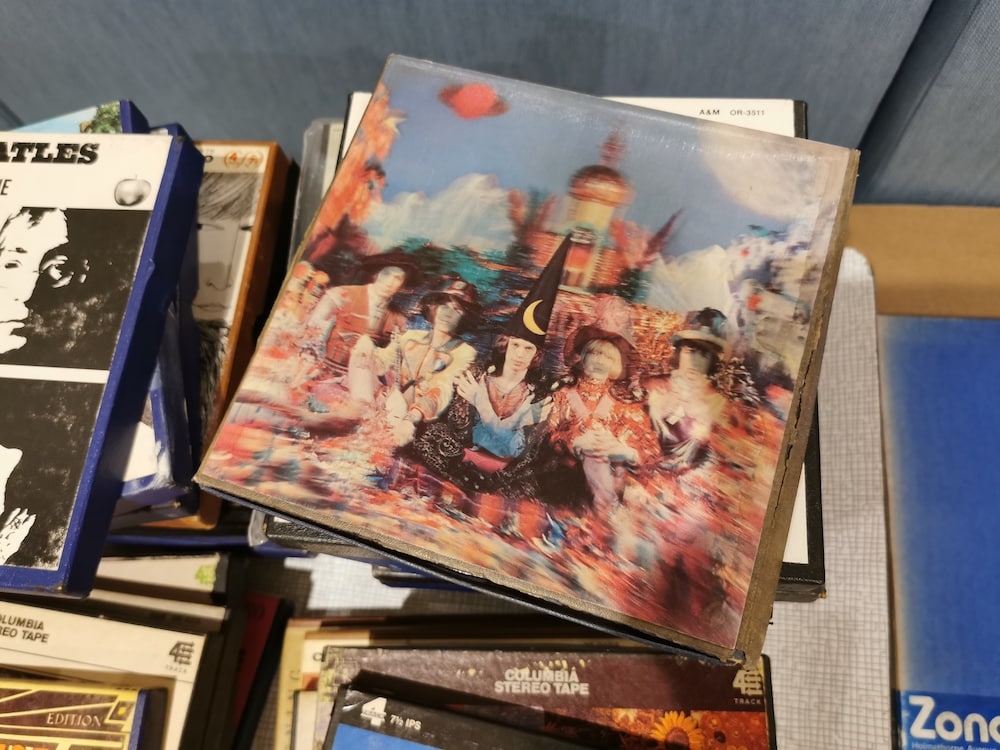
The Rolling Stones, Her Satanic Majesties Request, reel-to-reel tape with 3D cover!
Admittedly, enjoying music over a top-quality hi-fi system is an indoor pursuit, which involves bringing people into one’s home, and not all of us have the space Hy was able to provide. Because automotive gatherings are intrinsically outdoor pursuits, other than visits to museums and private collections, the car-loving community is probably the most active in the area of socializing with countless events. The two car clubs of which I am a member seem to have weekly get-togethers, ranging from rallies to short road trips to tours to concours to dinners.
I have no idea what stamp collectors, bibliophiles, oenophiles, or other enthusiasts do to share the love, but I’m enjoying group listening sessions even more than I did before COVID-19 f*cked up the world. As I write, I look forward to pending visits from Copper’s Jay Jay French and Magico’s Peter MacKay to Chez Kessler for a session with my vintage reel-to-reel tapes. And Beatles fanatic Jay Jay absolutely needs to hear the Capitol Sgt. Pepper, on the Denon DH-710F. Just as Tim played it for me.
As William Bell sang, “You don’t miss your water till your well runs dry.” I am happy once again to be able to drink deeply with friends. Roll on, vaccination No. 5.
Header image: Studer B67 tape deck. All images courtesy of the author.

